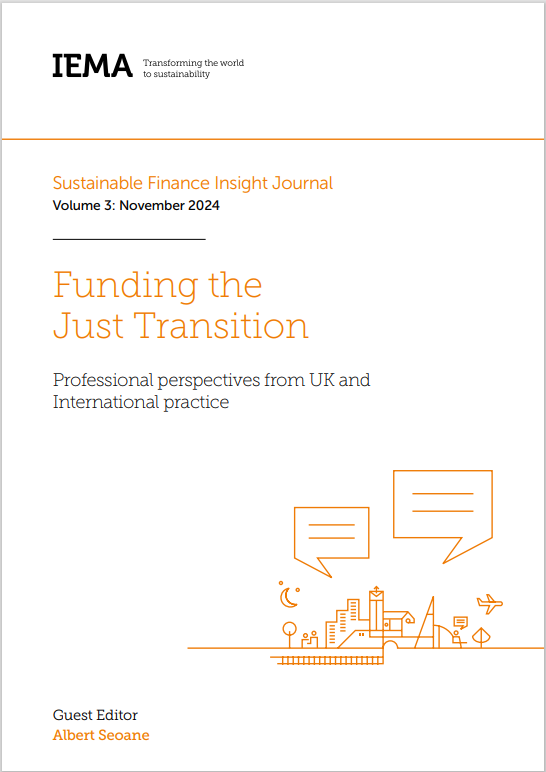The volume begins with some scene-setting. Anastasia Linn, Matt Orsagh and Steve Rocco from the Arketa Institute for Post Growth Finance discuss the critical need to negotiate a just transition as we shift from a carbon-intensive world to one constrained by the need to operate within planetary boundaries.
Grégoire Lusson (Head of NEST, BNP Paribas Group) then outlines the challenges financial institutions face in supporting just transition, emphasising the importance of helping small- and medium-sized enterprises (SMEs) and vulnerable groups manage the transition without significant economic disruption.
James Alexander and Liza Hartley from UKSIF advocate for a comprehensive framework for transition finance in decarbonising hard-to-abate sectors. They argue for the necessity of mandatory, standardised transition plans for all listed and large unlisted companies, with clear targets and periodic goals.
Joana Pedro (Social Lead, UNEP Finance Initiative) delves deeper, providing a roadmap for banking and insurance sectors to incorporate just transition principles into their operations. She offers practical guidance on integrating these considerations into existing business models and new products and service offerings.
Tahnee Rossiter and Kate Hooper from Carbon Trust discuss the crucial role of transition finance in helping emerging economies decarbonise, especially in industries where low-carbon alternatives are still developing. They emphasise the importance of third-party verification to ensure that transition finance is implemented effectively and transparently.
Farah Hussain, Justine Sylvester and Dr. Rachel Perks present the World Bank’s Just Transition Taxonomy, a list of 57 eligible economic activities to guide investments that support a just transition from coal.
In the second part of the Journal, there are case studies and tips for finance practitioners to support just transition. Alban de Faÿ from Amundi presents two examples from Amundi’s Just Transition for Climate Fund, demonstrating how to integrate just transition principles into investment decisions.
Brendan Curran, Joana Gjinopulli and Dr. Margherita Calderone from the EDRB provide a case study from North Macedonia, showcasing a project that not only promotes renewable energy deployment but also helps workers impacted by the coal phase-out by offering skills development programmes.
Md Tariq Habib and Arnab Sarkar from the Climate Policy Initiative discuss the challenges countries like India face in balancing energy security and affordability while transitioning away from fossil fuels.
Arzu Uraz Yavaş of WSP shares insights from two major projects: one involving the development of a Just Transition strategy for a global mining client and the other relating to the phase-out of a coal power plant in the EU and its social implications.
Seb Born and David Luck of Sustainability & Finance Ltd provide a case study on tidal stream energy and outline how workers from declining fossil fuel industries can transition into roles within renewable energy sectors.
Finally, Torrey Sanseverino from BeZero highlights the role that purchasing high-quality carbon credits plays in supporting a just transition to net zero. She emphasises how the voluntary carbon market allows companies to offset emissions while delivering both environmental and social benefits.
As you explore this edition of IEMA’s Sustainable Finance Insight Journal, I hope you find these articles as enriching and insightful as I have during the selection and editing process.
The insights shared by our contributors not only highlight the complexities of achieving a just transition but also offer actionable strategies and examples from various sectors. My hope is that you can take these learnings back to your own work, enhancing your understanding and approach to sustainable finance.
Download a copy of the 'Funding the
Just Transition' Journal here.
Interested in joining the Sustainable Finance Network Steering Group? Click here


